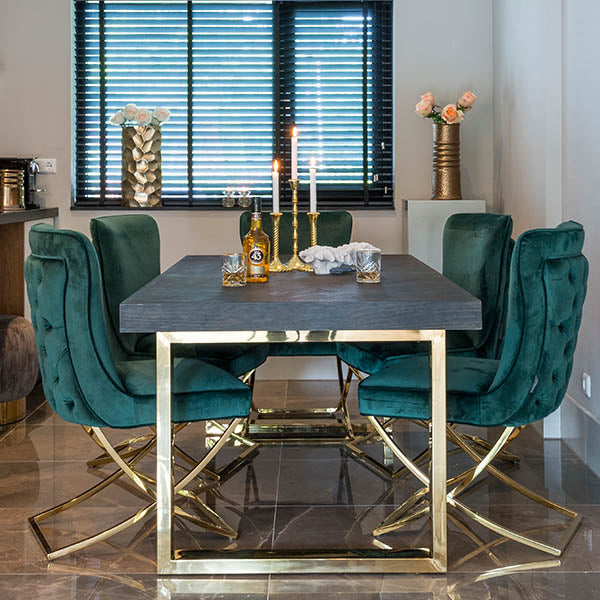
The metallic finish in a room’s décor is nothing new. In fact, there are some interior designers who suggest that no room is complete without a metallic finish to frame the space. How we use a metallic finish as an accessory and detail has changed. But can you overdo the shiny finish? How do you work with metal so that the overall finish is stylish and chic? Do you mix gold upholstered dining chairs with silver accessories? Will it all go with your reclaimed wood dining table? And can you throw in a gold rug for good measure? Here, we take you through some ideas on how to mix metals with the best effect.
Metals in décor
We are accustomed to seeing metallic finishes in a room in detailing such as door furniture, cabinet and sideboard door handles, kitchen cabinet handles and more. To a certain extent, these metal handles and hinges are inevitable. When we decorate a room, we decide on the finish and colour – would you opt for brass door handles or chrome? Would you opt for a brushed, matte finish or a shiny, mirrored and highly polished effect?
But today, it isn’t just these small details that are metal in any given room but in other accessories too, such as the base of lamps and the frames of reclaimed wood furniture. But how can you welcome metallic finish into a room? Can you mix metals?
Our tips for mixing metals
Metals in the dining room bring light, shimmer and opulence – things we are all in favour off. The recent fusion of Hollywood glamour with the industrial style has created a platform for the confident use of more than one metal in a room. to get it right, follow these tips that are proven to work.
1 Choose a dominant metal type or colour
Just like using more than one colour in a room, you need to decide which is the dominant metal type. Will it be a mirrored gold colour such as in the Blackbone Collection or will it be brushed chrome?
Making your choice of one main metallic finish or colour such as centring the room around a dining table with grey dining chairs means that you can use other metal finishes or colours in a supporting role if you intend on introducing more than one metal to a space.
#2 Three metallic finishes
Limiting your choice to three metallic finishes in a room prevents the glaring, mish-mash effect that is anything by elegant and chic.
With your dominant metal making the first all-important impression, you need to bring other metals into play. There are no hard and fast rules about which metals can or can’t be used with each other. It is a case of experimenting to determine if you like the overall effect and finish.
There is no denying that using similar colours work wells. For example, the black steeliness of the industrial style works surprisingly well with both polished and matte chrome. Likewise, the golden shimmer of a brass effect finish will fuse well with the yellower shade of gold and black steel.
#3 Work metals with your colour palette
No matter what colour you choose for the walls and the rug of the dining room, the metallic finish needs to match and contrast with your chosen hue.
For drama, the depth of black steel sits well with navy as it does with very dark earthy green or even the orange glow of terracotta. For glamour, add polished metal, such as chrome or the brass colour finish.
Against lighter colours, lighter metallic finishes work well. The beauty of mirrored chrome is no lost against a powdered pink or other pastel and chalky shades.
Effortless integration
From the chrome or brass legs of your 6-seater dining table and fabric dining chairs to the frame of the display unit in the dining room, metals are simply perfect. But which would be your choice?


